The Insider
His body was broken but not his will
June 16, 2010
When Tom Tindall thinks about life and death these days, he knows the distinction can sometimes be measured in inches and seconds.
“A lot of times people come close to death,” says Tindall, one of Los Angeles County’s top officials. “A lot of times, the truck just misses them and they go on with their lives. The truck didn’t miss me.”
In early April, while Tindall and his wife were touring Nepal on a motorcycle, he was struck from behind by an out-of-control truck that launched him into a concrete wall. He suffered three fractured vertebrae in his neck, broken collar bones on both sides, a cracked sternum, a broken left scapula, a separated shoulder, eight broken ribs and two punctured lungs, one of which collapsed completely. The other functioned barely enough to keep him alive.
“Breath,” he says, “was my struggle.”
Remarkably, just 11 weeks later, Tindall has now begun to return to his job as director of the Internal Services Department, whose 2,000 employees are responsible for everything from information technology services to the maintenance of county buildings. Tindall was named ISD’s director in 2008, after more than a decade of work with the county.
“I refuse to believe that I cannot come back 100% from this thing,” says the lanky 60-year-old, an avid runner and hiker. “Two weeks after the accident, after trying to walk, I thought to myself that I’m going to be in a wheel chair for the rest of my life. But then I told myself, ‘No!’ This is something I need to keep working on and be positive about. It crossed my mind to go on disability but then I wouldn’t be where I am now—getting better.”
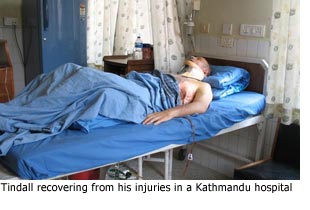 Looking at Tindall these days, you’d be hard pressed to see any evidence of the trauma that nearly killed him. The only outward sign is that he now tilts slightly to the left, the result of a fractured shoulder blade that will require extensive physical therapy. But without a shirt, he says, it’s not so pretty. “I look like Frankenstein,” he says, because of scars and indentations from broken bones.
Looking at Tindall these days, you’d be hard pressed to see any evidence of the trauma that nearly killed him. The only outward sign is that he now tilts slightly to the left, the result of a fractured shoulder blade that will require extensive physical therapy. But without a shirt, he says, it’s not so pretty. “I look like Frankenstein,” he says, because of scars and indentations from broken bones.
Tindall’s recovery is all the more remarkable because of the accident’s location—far from the world of sophisticated Western medicine—in the village of Itahari in southeast Nepal.
Tindall and his wife, Okyo, arrived there late in the afternoon on April 4, Easter Sunday, the fourth day of a journey that began in the Nepalese capitol of Kathmandu. This was Tindall’s third trip to Nepal, his first as part of a small group touring on motorcycles.
When they rolled into Itahari at around 4:30 p.m., Tindall says his wife, who was riding on the back of his motorcycle, developed a cramp. Tindall suggested she take a seat in the pace car that had been driving behind them with extra gasoline—a move that potentially saved her from the kind of physical wreckage that was about to claim her husband.
As the group began slowly making its way through town, a truck apparently failed to recognize that traffic had slowed and plowed into Tindall.
“Next thing I know,” Tindall says, “I woke up in a police vehicle transporting me to a clinic.”
Thirty miles later, they arrived at that clinic only to learn that the X-ray machine was broken. The next day, a helicopter transported him back to Kathmandu. On the advice of a locally-based American doctor, he was admitted to B & B Hospital, where, among many other things, his vertebrae were fused and wired together. He remained in Nepal for a month, until his lungs had improved enough for him to be flown back to the U.S. During that time, he says, L.A. County Chief Executive Officer William T Fujioka often checked in with him.
In recent days, Tindall, a former Army paratrooper, says he’s begun getting back in shape, walking two miles in the evening as well as going to physical therapy several times a week. He’s now in the office on many days, meeting with Internal Services staffers and getting the department ready for one of its newest jobs—administering a program to help homeowners finance solar energy installations through a special loan program.
On a deeper level, Tindall says, he’s still reflecting on how he’s been changed by his near-death experience in the land of Mt. Everest.
He says that, in his darkest hours, he prayed for help when he was struggling to breathe, despite the religious doubts he’s harbored throughout the years. But to his surprise, he says, “I found comfort, and it moved me closer to some kind of sense that you can give yourself over to the unknown…I don’t know how you can go through something like this without a renewed view of your life and its connections to something bigger.”
Posted 6/16/10
A new way to master social work
June 4, 2010
Daniela Alvarado has had her sights set on a master’s degree in social work. But she knew she’d first have to quit her job as an intake worker in the county’s Department of Public Social Services to make that happen, a move she couldn’t afford.
Masters programs in social work are notoriously hard for full-time employees since, beyond a challenging course schedule, they demand hundreds of hours of field work.
But thanks to an innovative new partnership between the county’s welfare department and California State University at Northridge, Alvarado can now study and still work.
Starting in August, she will be part of the initial class of 25 Department of Public Social Services staffers starting a three-year master’s of social work curriculum that brings a classroom from Northridge to the department’s headquarters in the City of Industry, 40 miles away.
Even more important than the location, the new program tailors the difficult mix of classes and field work so students can juggle work and school in a hard but manageable six-day-a-week schedule.
“I can’t wait,” says Alvarado, 24, who currently determines eligibility for general relief applicants.
The curriculum and faculty will be identical to the program on CSUN’s campus, except that courses will be held on Saturdays. Meanwhile, the DPSS students will shift to a Monday through Thursday “4-40” schedule to keep Fridays free for field work internships.
The DPSS partnership with CSUN, unanimously approved this week by the Board of Supervisors, is the first time that the college’s social work department has taken a degree program off-campus to a government agency.
DPSS Director Philip Browning pushed for the partnership as a way to raise the department’s professional and educational standards.
“The master’s in social work degree will bring a new level of leadership and skill to the department,” says Browning, who has an MSW, as the degrees are known. “It’s going to be a really rigorous program.”
Currently, Browning says, “virtually none” of the department’s 700 social workers have a master’s in social work.
Browning expects the benefits will be felt first at the department’s In-Home Supportive Services division, which employs most of the social workers to run a state-funded program that provides 185,000 elderly or disabled residents with home-based care.
The new program follows on an earlier partnership, launched in 2006, that teamed DPSS with CSUN to help employees obtain a master’s in public administration. So far, there have been more than 50 MPA graduates.
Like the MPA program, the social worker program is cost free to the county. Students are responsible for tuition, estimated at $29,000 for the three years of study, plus expenses. Students can apply for the department’s tuition reimbursement of $750 per semester and seek financial aid through CSUN.
Already, there is a waiting list of more than 70 applicants. Another class of 25 will begin the application process for entry in the fall of 2011.
CSUN faculty members say they are impressed by the quality of the incoming class of DPSS workers. “The students are mature, diverse and really enthusiastic,” says Amy Levin, chair of the Northridge social work department. “We’re very excited about this program.”
Many of the incoming students are mid-career staffers in their 30s and 40s. The average age is 41, Levin says.
Patrick Muro, 49, is one of the older ones.
For years, he’s wanted to earn a master’s degree in social work, but couldn’t afford to leave a series of DPSS jobs, he most recent as an administrator for the In-Home Supportive Services program in Chatsworth.
“It’s great they are willing to be flexible to help us earn this degree,” say Muro. With six children, he says, he’s grateful for the flexibility.
Posted 6/3/10
Boycott measure takes aim at Arizona law [updated]
June 1, 2010
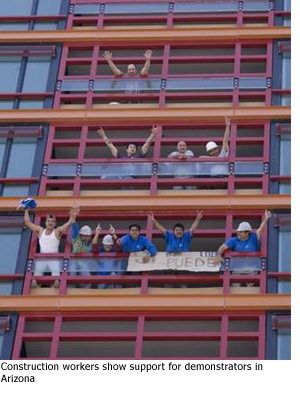 A sharply divided Board of Supervisors on Tuesday approved a Los Angeles County boycott of Arizona—potentially halting millions of dollars in contracts and investments to protest the state’s controversial new illegal immigration law.
A sharply divided Board of Supervisors on Tuesday approved a Los Angeles County boycott of Arizona—potentially halting millions of dollars in contracts and investments to protest the state’s controversial new illegal immigration law.
The Arizona law, which requires law enforcement officers to check the immigration status of those they suspect are in the country illegally, has become an international lightning rod. Tuesday’s vote turned the Hall of Administration meeting room into a forum for the array of divergent viewpoints that have sprung up since it was signed into law.
That was clear when, moments after the vote, one section of the audience chanted “yes we can,” while another shouted “shame on you.”
The board’s 3-2 vote was based on a motion by Supervisors Gloria Molina and Zev Yaroslavsky, who expressed concerns that the Arizona law, set to take effect next month, will lead to “widespread racial profiling and will subject many ‘foreign-looking’ persons and persons of color—including countless U.S. citizens, legal residents, visiting business persons and tourists—to unlawful interrogations, searches, seizures and arrests.”
During their remarks before the vote, Molina and Yaroslavsky both said they conceivably could find themselves unjustly placed under scrutiny in Arizona.
“You only have to look at me to know that I’m one of those individuals who would have a heck of a tough time in Arizona,” Molina said.
Yaroslavsky argued that anyone whose name sounds foreign, like his, or has an accent, could “be ripe for questioning” if they’re pulled over in the desert, forced to provide a birth certificate or passport to prove their citizenship. “That’s nonsense,” he said. “That’s unconstitutional.”
Joining Yaroslavsky and Molina in approving the motion was Supervisor Mark Ridley-Thomas, who did not discuss his views on Arizona’s law or on the merits of the board’s action. Rather, he said simply he’d let his vote speak for itself. Later, in a press release he said he voted for the boycott to help “bring an end to this civil rights crisis and restore fairness under the law.”
Voting against the measure were Supervisors Don Knabe and Michael D. Antonovich, who last week called the proposed boycott “stupid.” On Tuesday, Antonovich argued that Arizona was forced into action because the federal government had failed to enforce the nation’s immigration laws. “The state of Arizona has said out loud: the emperor has no clothes,” Antonovich said.
Knabe, meanwhile, criticized his colleagues for spending time on an issue that, he said, was irrelevant to the needs of L.A. county residents.
The measure instructs staff to report back in two weeks on how—and how soon—the county might legally end its contracts with Arizona companies without harming the county’s interests. It orders a similar review of investments in Arizona securities held by the county and by the Los Angeles County Employees Retirement Association (LACERA.)
A preliminary study by the Auditor Controller’s Office indicates that Los Angeles County agencies have spent $121.3 million over the past five years on goods and services from companies with Arizona addresses. The contracts range in size from a few hundred dollars to many millions, providing the county with everything from Taser guns to landscaping products to waste hauling.
The extent of county contracts in Arizona—including whether the companies are truly based in that state—is still being researched, with a final tally yet to come.
Among the largest expenditures was the nearly $14.8 million paid to Tucson-based Sunquest Information Systems since fiscal 2005. “We do value the business we do in Los Angeles County and we want to continue to do business with our partners in the county,” Kelly Feist, vice president of marketing for the laboratory testing and technology company, said Tuesday.
Feist added that while the company is based in Arizona, it also has offices in North Carolina, England and India. “Most of our employees reside outside of the state of Arizona,” she said.
As for investments, the county holds no stock in Arizona-based companies or in Arizona state or municipal bonds, said Doug Baron, a division chief for the Treasurer Tax Collector, a department that oversees the county’s $25 billion investment portfolio. Baron said the county portfolio does contain “commercial paper”—short term money-market notes issued by banks and corporations—issued by companies that do business in Arizona. It may also hold commercial paper on Arizona-based companies, Baron said Tuesday.
Under the measure, county travel to Arizona also will be suspended unless the trip would “seriously harm the county’s interests,” and directs departments whenever possible to refrain from entering into new contracts with businesses in the state as long as the law is in effect.
In addition to putting a financial squeeze on Arizona, the boycott measure seeks to exert political and legal pressure. It instructs the county’s Chief Executive Officer to send a letter to elected officials in Arizona opposing the law and directs the County Counsel to file a brief in U.S. District Court supporting litigation that challenges the law’s constitutionality.
In addition, it directs the county’s federal legislative advocates to lobby against the use of federal funds to support implementation of the Arizona law.
The supervisors’ action comes after the Los Angeles City Council last month banned most city travel to Arizona and future contracts with firms located in the state. The city’s partial boycott did not, however, cancel all of the city’s contracts with Arizona companies.
The vote came after a parade of speakers testified on both sides of the issue, prompting some vocal responses from the small but engaged audience. Molina, the board’s chair, repeatedly admonished the audience to stop interrupting the speakers.
Those testifying Tuesday ranged from Sheriff Lee Baca (who opposes the Arizona law) to the family of Jamiel Shaw Jr., killed in 2008 by an illegal immigrant gang member, who told the board they support the Arizona law and oppose L.A. County’s boycott.
Posted 6/1/10
Updated 6/18/10
Implementing the first stage of L.A. County’s economic boycott of Arizona, Chief Executive Officer William T Fujioka has directed departments to end travel to the state, unless approved by his office, and to avoid entering into new contracts or amending existing ones with Arizona-based contractors.
In the directive, Fujioka says the county is readying a final list of current contracts with Arizona firms as a step toward determining which of them may be legally terminated without causing the county undue harm.
Gunmen confront “lucky” health workers
May 26, 2010
The two L.A. County mental health workers felt confident there was little potential for violence lurking inside the Gardena apartment where they’d been dispatched to evaluate a man who, according to his mother, was “acting bizarre.”
As always, before even arriving, they’d assessed the risks.
“Does the patient know we’re coming?” they asked the mom, who had called the Department of Mental Health’s crisis line. “Has he been hospitalized before? Does he get violent? Has he hurt anyone today? Is he suicidal? Homicidal?”
The answers to these questions and others convinced them that, while the man was manic and “hyper religious,” he probably was not dangerous.
What Jimmey Loya and Shawn Kim could not have foreseen at that moment was that the real danger was bearing down on them from the outside and that their bipolar patient would, strangely enough, be the one to save the day.
On Tuesday, Loya and Kim, who are members of one of the county’s Psychiatric Mobile Response Teams, were praised by the Board of Supervisors for their professionalism and cool headedness during a harrowing, March 29 home-invasion robbery by three gunmen. Supervisor Mark Ridley-Thomas, in whose district the events occurred, called the mental health workers heroic.
Both men, who’ve been employed by the county for less than a year, say the incident illustrates the unpredictable and largely invisible nature of their work. Not a day goes by, they say, that they don’t feel lucky to be alive.
Loya and Kim say they arrived in Gardena at about 6 p.m. Loya, 34, is a registered nurse. Kim, 29, is a psychiatric social worker. As part of a multi-disciplinary team, it’s their job to determine whether patients require immediate hospitalization or should be referred to outpatient services. With each call, the teams enter a universe of uncertainties.
In this case, the pair had been dispatched to a second-floor apartment in an industrial area of Gardena with a reputation for gang activity. When the door opened, the patient said simply: “Come on in. Let’s get this over with.” Arrayed behind him was his support system—his mom, dad, uncle and aunt. 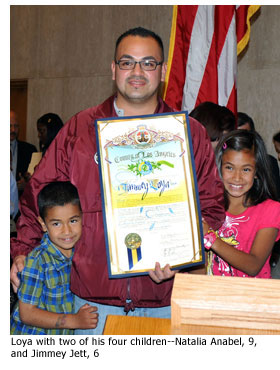
Loya and Kim quickly sized-up the place, looking again for dangers and ways to make their visit safer. They made sure, for example, that all the lights were on. They looked for weapons and kept the front door wide open so that they’d have a fast escape should something go wrong. They then all took a seat around a dining room table, except for the aunt, who stood behind her nephew.
Loya and Kim soon concluded that the patient did not meet the criteria for involuntary hospitalization. He was denying any homicidal or suicidal thoughts. He was not hallucinating. He was loud but not hostile. He was polite and approachable—although that behavior was about to dramatically change.
As the mental health workers were providing the patient with a referral to Harbor/UCLA medical center, three men brandishing handguns burst into the apartment through the open front door.
“Nobody move!” they shouted. “Take everything out of your pockets and place it on the table!”
“I can’t believe this is happening,” the aunt exclaimed. “Is this for real?”
Kim, for his part, was praying that their patient would remain calm and not escalate the situation. “Of course, that didn’t end up happening,” he says.
Instead, the patient suddenly shouted: “How dare you come in here with two officers in my house!” Kim and Loya say their hearts sank. They now feared that the gunmen might kill them in a mistaken belief they were cops. “We’re definitely dead,” Kim thought to himself. “No way we’re going to get out of this anymore.”
The gunmen moved more menacingly toward the mental health workers. “I could feel the gun on the back of my head,” Loya says. “I could feel the barrel. I knew I was going to die.” Loya says he thought about his four young children, the oldest of them 9. But he says he knew that, with a mom who’s a nurse practioner and a sizable life insurance policy to collect, “they were going to be OK. I accepted death.”
The patient was in a different state of mind. He jumped up out of his chair, ripped off his shirt and ran straight toward the armed invaders, screaming, “Kill me! Kill me! Kill me!” The gunmen, startled, headed for the door and then down the stairs, chased by the muscular patient.
“When our client got up, I thought we were doomed. But it caught them by surprise,” Kim says of the robbers. “They didn’t expect anything like that. It didn’t seem they were ready to kill anybody. We were very fortunate.”
When the patient strode back into the apartment, he shouted: “That’s the power of God! If I would have died today, I would have gone to heaven.” He then looked at the county workers and said, “Do you think I have a problem now with my anger?”
“On the contrary,” Loya says he responded. “you’re my hero.”
Loya and Kim say that, as you might expect, their bosses in the Department of Mental Health have been especially attuned to potential psychological trauma they may have suffered from the incident, in which no arrests have been made. Both say they returned to work quickly and are doing well.
Loya says that one thing he does differently these days when entering an unfamiliar home is to keep his hand on his BlackBerry with 911 already punched in and ready to send. He says he also has a new response when people ask how he’s doing: “I feel good. And I’m alive.”
Posted 5/26/10
There’s a new website in town
May 21, 2010
“Nerph” probably won’t like the Sheriff’s Department’s new website, but law abiding county residents probably will.
The convicted spray-paint vandal, a.k.a. Jose Miranda, gets prominent play as one of “L.A.’s Most Wanted Taggers,” a new element of the department’s retooled site, which was launched this week. Click here to see it.
The new look combines big photos with crime-blotter press releases, crime statistics and consumer-driven services to better link county residents with the department.
“Our mission is to give the public what it wants in the way the public wants it,” says Capt. Mike Parker, the site’s project leader.
The web makeover was ordered last year by Sheriff Lee Baca. “He said let’s design this in a way that’s engaging and visual,” says Parker.
Parker says that other law enforcement sites provided no model for the design or content. So he and his team opted for a look more akin to news media websites, both to entice the public and organize information. Most of the news stories in the Headlines and Top Stories section are departmental press releases that link to numerous TV and newspaper stories. A Google widget provides quick translation into over 50 languages.
The new site also aims to provide the public with a better understanding of the department’s activities and tell stories that the traditional media may ignore. Says Parker: “We get to tell our story now.”
Posted 5/13/10
Last chance to register for primary vote
May 20, 2010
The deadline to register to vote in the June 8 statewide primary election is Monday, May 24. The county’s Registrar-Recorder announced that its office at 12400 Imperial Highway in Norwalk will stay open till midnight Monday to receive new registration forms. Would-be voters also can get online registration forms at www.lavote.net or by calling the Voter Registration Request Line at (800) 481-VOTE (8683.) Those who are unsure whether they’ve registered can check their status online at www.lavote.net or by calling the Registrar-Recorder’s office at (562) 466-1323.
Have library card, will spokesmodel
April 22, 2010
All the big names do it. Cosby. Sarandon. Abdul-Jabbar. Ali. So why not Antonovich, Knabe, Molina, Ridley-Thomas and Yaroslavsky?
Taking a page from the national READ! campaign, the county’s public library department has decided to enlist some in-house talent for its latest poster blitz. The five Los Angeles County supervisors, each holding a favorite book, are featured in the new posters, created using a special software provided by the American Library Association, that will go up in the county’s 85 libraries over the next few weeks.
These are challenging times for libraries everywhere; the new proposed county budget would cut hours at some branches and eliminate the adult literacy program. But the mission remains the same: promoting reading and literacy throughout diverse communities. Here’s an early peek at the posters, along with a few words from each supervisor about the book they chose.
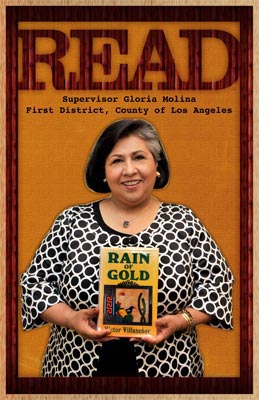
Supervisor Gloria Molina
1st District
Rain of Gold
by Víctor E. Villaseñor
I chose Victor Villaseñor’s Rain of Gold because it is an epic Mexican-American story. The book tells the tale of Juan and Lupe Salvador as they fled from Revolutionary-era Mexico to the United States in search of a better life. Villaseñor always insisted that Rain of Gold was a non-fiction account of his family history, which is probably why his descriptions of 1920s and 30s Southern California are so vivid — and why the book itself is such a great read.
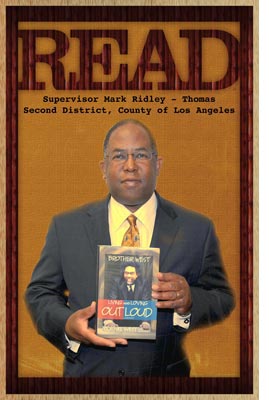
Supervisor Mark Ridley-Thomas
2nd District
Brother West: Living and Loving Out Loud, A Memoir
by Cornel West
I chose this book because Cornel West is a native Californian and one of our nation’s foremost public intellectuals. He is a brilliant, passionate and courageous scholar dedicated to making the world better. I’ve been fortunate to carry on a 30-year conversation with Dr. West and firmly believe we could all learn from his writings — the latest of which is his memoir, “Living and Loving Out Loud.”
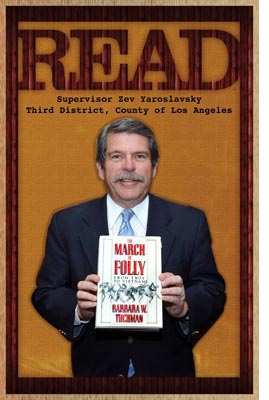
Supervisor Zev Yaroslavsky
3rd District
The March of Folly
by Barbara Tuchman
The March of Folly, by Barbara Tuchman, has become my bible in the making of public policy. Her assertion that folly is “a perverse persistence in a policy that is demonstrably unworkable,” should guide decision-makers in every walk of life, especially in government. I have long recommended this volume to newly elected officials, and I refer to it constantly as a reminder of the “do’s” and “don’ts” in decision-making.
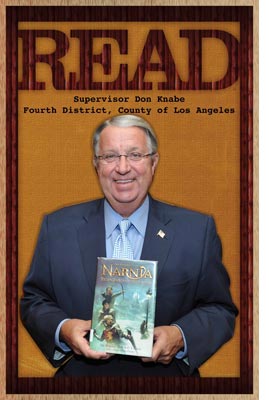
Supervisor Don Knabe
4th District
The Chronicles of Narnia
by C.S. Lewis
This classic book has special meaning for the Probation Department’s Operation Read program, which I helped create and fund more than a decade ago. A few years back, Lewis’ book was the annual choice of Operation Read. Great books like this represent the backbone of what Operation Read is all about–building literacy skills among thousands of participating young people, helping them gain knowledge and move more successfully into their futures.
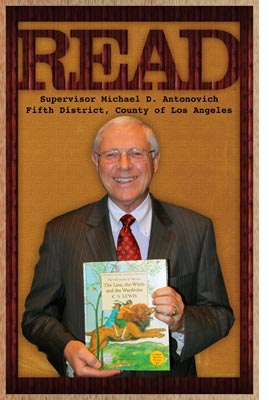
Supervisor Michael Antonovich
5th District
The Lion, the Witch and the Wardrobe
by C.S. Lewis
The first book in the C.S. Lewis series, “The Chronicles of Narnia,’ is a Judeo-Christian allegorical tale of temptation, transformation and redemption that challenges readers of all ages to exercise their minds and imaginations. It is a brilliant and powerful story my children and I enjoyed reading together and that I would recommend parents share with theirs.
Posted 4-21-10
Students take the poll position
April 6, 2010
 Who says democracy is only for the 18-and-older crowd? And who says teenagers are a cynical bunch?
Who says democracy is only for the 18-and-older crowd? And who says teenagers are a cynical bunch?
More than 2,500 Los Angeles County teenagers are expected to dip their toes into the waters of political awareness on June 8 by volunteering at polling places for the California primary elections. The county’s popular Student Poll Worker Program is open to public and private school students who are at least 16, are U.S. citizens, have a minimum grade point average of 2.5 and have parental and teacher consent.
But wait, there’s more.
Student volunteers will receive a stipend of up to $105 after completing a two-hour training session and their election-day duties. The stipend can also be exchanged for school community service credit. According to teacher coordinators, the money is well spent.
“When I tell them they can earn $100, that’s a lot of money,” says Stan Bartosiak, a social studies teacher at Glendale High School who has been a local coordinator for the program for the past four years.
“But once they’ve done it, it’s such an overwhelming civic experience. Their perceptions change, no doubt about it. They get to work as adults in a situation that’s rarely available to them,” Bartosiak says, adding: “If we can get life-long voters, 100 bucks per kid is a great investment,”
Bartosiak, who has taught at Glendale High for two decades, is so committed to making sure his students become voters that he holds 18th birthday celebrations for them in class and registers them to vote on the spot.
Blanca Casarrubias, countywide outreach manager for Student Poll Worker Program, said she had 37,500 total student volunteers in the November, 2008, elections and expects more than 3,000 in November, 2010. Students are placed in polling sites within their neighborhoods and work from 6:00 a.m. until approximately 9:30 p.m.
Casarrubias says there are unique benefits for bringing students on board. Many, she said, are bilingual, technologically savvy and sometimes more dependable than adults because they have made the commitment through teachers and parents. And, Casarrubias noted, they can carry heavy election supplies.
Registration must be completed via the school’s designated teacher coordinator and be completed by April 9. Details about registration are available here.
Posted 4/06/10
Audit released on “alleged intrusion” by Board deputies
February 26, 2010
Following his termination as head of the County’s Department of Regional Planning, former director Bruce McClendon stated publicly that his firing was in retaliation for protesting what he alleged was improper influence over his department by the board and its staff. The county commissioned an independent audit by Harvey M. Rose Associates to investigate McClendon’s charges.
The Rose report examined eight specific allegations, finding five of them “not substantiated” and three “not substantiated, with qualifications.” The full report may be found on the County Auditor-Controller’s site, here.
Posted 2/26/10




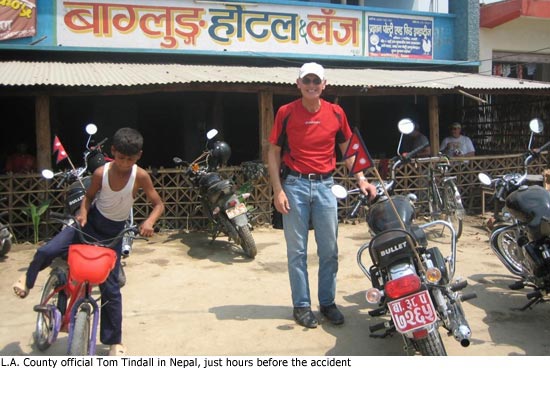
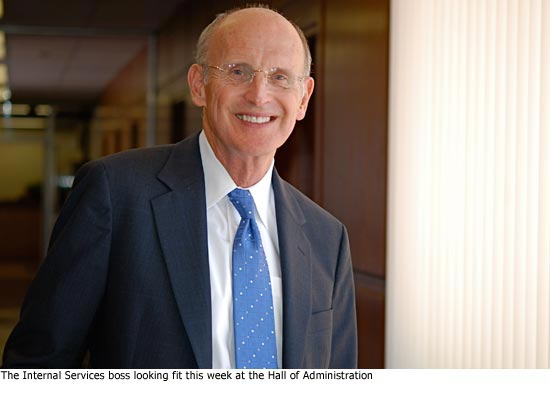
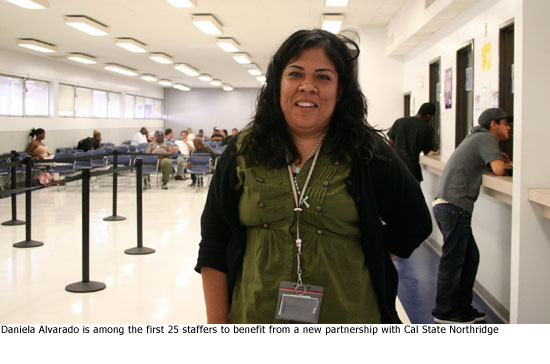
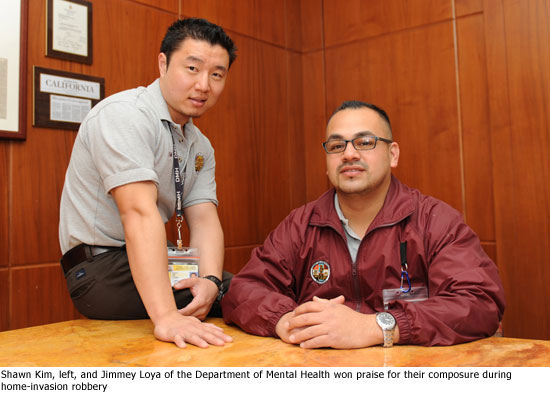
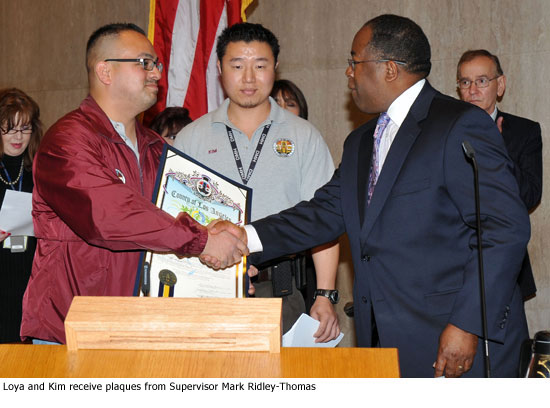








 405 bridge work causes a stink
405 bridge work causes a stink
